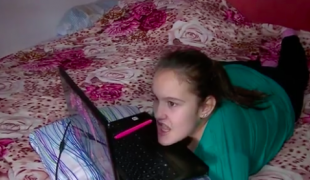- 1819
- 141
- 1
- 1
- 0
- Help Ukraine
About the solution
The project was developed to facilitate disabled people’s lives, and was presented at Fórum Mundial de Educação Profissional e Tecnológica, in 2009.
The device works through an interconnected electronic system, which uses an infra red emitter and a receptor fixated in the glasses, and it makes possible to click with a blink of an eye.
For the cursor movement, it was developed a system of sensors, located in particular spots on the glasses. They capture the head tilt, for the left, and for the right, and send the signal to the mouse.
According to the inventors, the device is efficient, low cost, and answers well to the user’s needs. The price is very low when compared to other similar devices. It costs approximately 12€.
Adapted from: http://www.emdialogo.uff.br/materia/estudantes-de-ensino-m%C3%A9dio-inve...
Watch the video: http://www.video.rnp.br/portal/struts/video.action;jsessionid=EB1057F138... (portuguese only)
This solution shall not include mention to the use of drugs, chemicals or biologicals (including food); invasive devices; offensive, commercial or inherently dangerous content. This solution was not medically validated. Proceed with caution! If you have any doubts, please consult with a health professional.
DISCLAIMER: This story was written by someone who is not the author of the solution, therefore please be advised that, although it was written with the utmost respect for the innovation and the innovator, there can be some incorrect statements. If you find any errors please contact the patient Innovation team via info@patient-innovation.com
-
-
390
-
0
-
6463

Glasses to serve as mouse for disabled people
CAREGIVING
Playing
Video gaming
Studying
Bone Disorders (Decalcification, Bone Deformity, Bone Fracture, Bone Infection)
Assistive Technology access
Body-Worn solutions (Clothing, accessories, shoes, sensors...)
Educational/Leisure device (book, toy, game...)
Difficulty walking or moving
Muscle weakness
Limited range of motion
Muscle pain or stiffness
Reduced grip force (grip)
Loss of muscle coordination
Muscle cramps or spasms
Joint deformity
Joint redness or warmth
Difficulty bearing weight
Muscle twitching
Numbness or tingling in the extremities
Joint pain or swelling
Promoting self-management
Preserving Organ Function
Managing Neurological Disorders
Promoting inclusivity and social integration
Medical Genetics
Neurology
Orthopedics
Rheumatology
Mobility issues
Solutions for Disabled people
Brazil
-
-
-
128
-
0
-
1676

Access Lab - a groundbreaking initiative that strives to ensure access to culture for people with disabilities and the deaf
WALKING: Walking
WALKING WITH A WALKING AID: Walking with a walking aid
MOVING IN A WHEELCHAIR: Moving using a wheelchair.
BODY BALANCE: Maintaining body balance
Attend Concerts/Performances
Website
Restoring mobility
Enhancing health literacy
Promoting self-management
Building Supportive Community Relationships
Promoting inclusivity and social integration
Enhancing Mental Health
Maintaining Balance and Mobility
Improving Speech and Communication
General and Family Medicine
Neurology
Occupational Medicine
Physical Medicine and Rehabilitation
Rheumatology
Mobility issues
Solutions for Disabled people
Portugal
-
-
-
136
-
0
-
1403

Collaborator James Leckey makes equipment to improve the quality of life and social inclusion of children with special needs
MOVING IN A WHEELCHAIR: Moving using a wheelchair.
BODY BALANCE: Maintaining body balance
STANDING UP: Standing up from a seated position
Playing
Neuromuscular Disorders
Assistive Daily Life Device (to help ADL)
Walking Aid (wheelchair/walker/crutches)
Assistive Technology access
5 Senses support devices: (glasses, hearing aids, headphones...)
Restoring mobility
Promoting self-management
Managing Neurological Disorders
Promoting inclusivity and social integration
Maintaining Balance and Mobility
Raise awareness
General and Family Medicine
Neurology
Orthopedics
Pediatrics
Physical Medicine and Rehabilitation
United States
-
 en
en